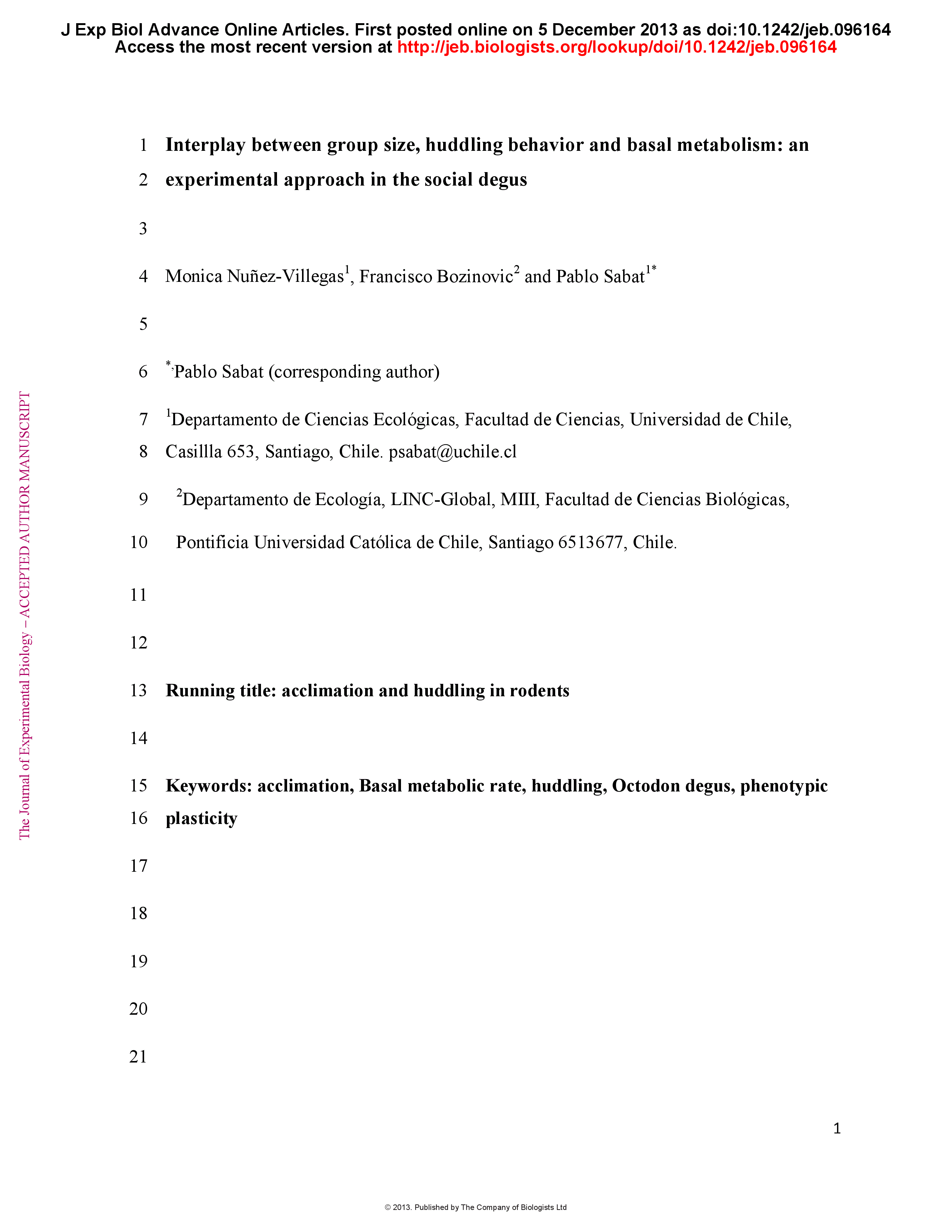Summary
Mammals exposed to low temperatures increase their metabolic rate to maintain constant body temperature and thus compensate heat loss. This high and costly energetic demand can be mitigated through thermoregulatory behavior such as social grouping or huddling, which helps to decrease metabolic rate as function of the numbers of individuals grouped. Sustained low temperatures in endothermic animals produce changes over time in rates of energy expenditure, by means of phenotypic plasticity. However, the putative modulating effect that huddling exerts on the flexibility of the basal metabolic rate (BMR) due to thermal acclimation remains unknown. We determined BMR values in Octodon degus, an endemic Chilean rodent, after being acclimated either to 15°C or 30°C during 60 days, both alone and in groups of 3 and 5 individuals. At 15°C, BMR of huddling individuals was 40% lower than that of animals housed alone. Moreover, infrared thermography revealed a significant increase in local surface temperatures in huddled animals. Furthermore, individual thermal conductance was lower in individuals acclimated to 15°C than at 30°C, but no differences were observed between single and grouped animals. Our results indicate that huddling prevent an increase in BMR when animals are acclimated to cold conditions and that this effect is proportional to the number of animals grouped.








